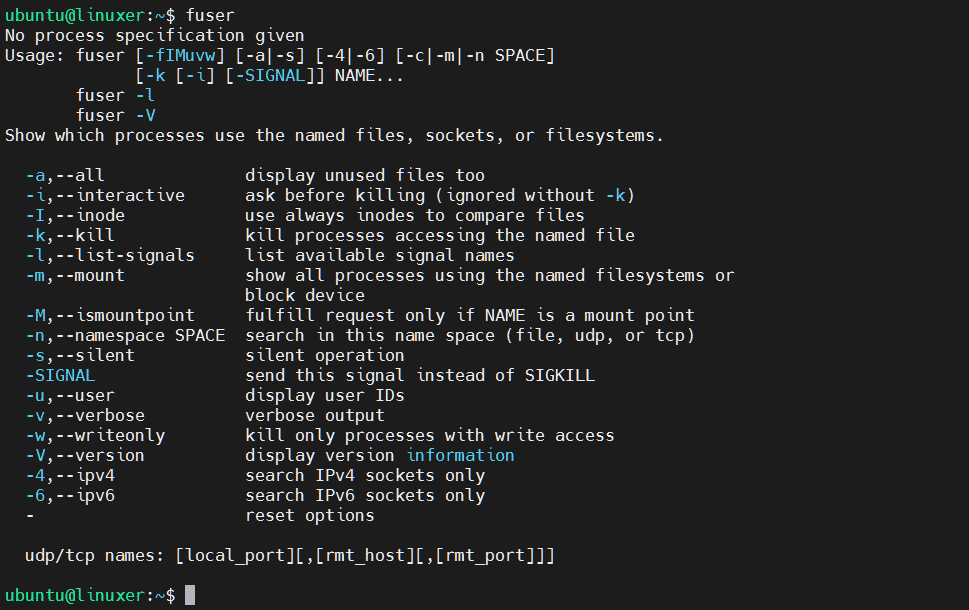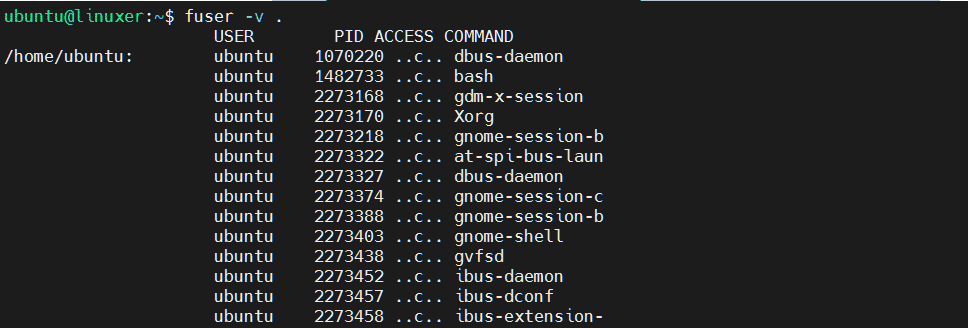Introduction
Files and folders in Linux are accessed by processes of a particular identity. You must know the id of the specific process if you want to perform any action on that process.
It is among the most important tasks of Linux systems administrators. It is involved in a number of activities under supervision, signaling processes, and setting the priorities of processes on the system.
Now we’re gonna teach you to find processes by using the fuser command in Linux.
The syntax of the fuser command
The popular syntax:
$ fuser [options] [file|socket]
$ fuser [options] -SIGNAL [file|socket]
$ fuser -l
Or you can look up usage with the command:
$ fuser
Output:

Using the fuser command
1. Checking the process detail accessing
$ fuser -v .
Output:

In the above command, it displayed USER, PID, ACCESS and COMMAND.
For example, I want to check the processes accessing of file test:
$ fuser -v -m test
Output:

2. Killing signal
For example, to kill all the processes, run the command:
$ fuser -k .
Output:

Using -ki option to ask yes/no:
$ fuser -ki .
Output:

3. Listing all signals:
$ fuser -l
Output:

Conclusion
We just taught you to find processes by using the fuser command in Linux.
Thank you for reading!




